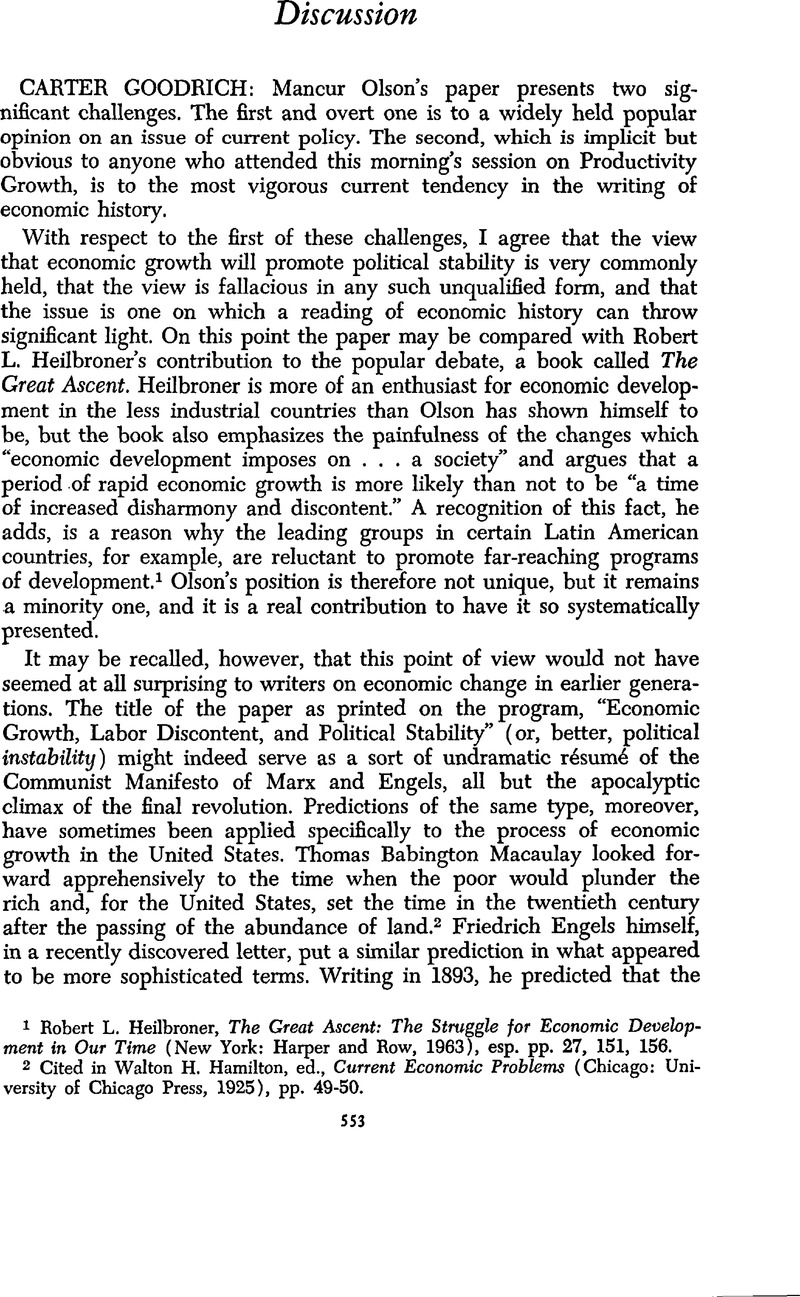No CrossRef data available.
Article contents
Abstract

- Type
- Discussion
- Information
- Copyright
- Copyright © The Economic History Association 1963
References
1 Heilbroner, Robert L., The Great Ascent: The Struggle for Economic Development in Our Time (New York: Harper and Row, 1963), esp. pp. 27, 151, 156.Google Scholar
2 Cited in Hamilton, Walton H., ed., Current Economic Problems (Chicago: University of Chicago Press, 1925), pp. 49–50.Google Scholar
3 Cited in Pollock, Norman, Populist Response to Industrial America (Cambridge: Harvard University Press, 1962), p. 84.Google Scholar
4 The authors of the report on Argentina by the United Nations Economic Commission for Latin America use the term “estancamiento.” Análisis y Proyecciones del Desarrollo Económico: V., El Desarrollo Económico de la Argentina (Mexico, D. F.: Naciones Unidas, 1959), esp. Part I, pp. 15–18.Google Scholar
5 Fillol, Tomás Roberto, Social Factors in Economic Development: The Argentine Case (Cambridge: The M. I. T. Press, 1961), p. 35.Google Scholar
6 See the figures of Bert Hoselitz as cited in Kuznets, Simon, “Present Underdeveloped Countries and Past Growth Patterns,” in Nelson, Eastin, ed., Economic Growth: Rationale, Problems, Cases (Austin: University of Texas Press, 1960), p. 19.Google Scholar
7 A notable statement of the case for combining social welfare and development policies was made by Mr. Vu Van Thai, then Director General of Budget and Foreign Aid of the Republic of Vietnam, at a conference held in New York City on October 23, 1959, under the auspices of the American Friends of Vietnam.
8 United Nations, Report of the United Nations Mission of Technical Assistance to Bolivia (New York: United Nations, 1951)Google Scholar. The Mission was headed by Dr. Hugh L. Keenleyside. This extremely stimulating and influential report appears in retrospect to have somewhat overstated the relative importance of public administration as compared to politics.


